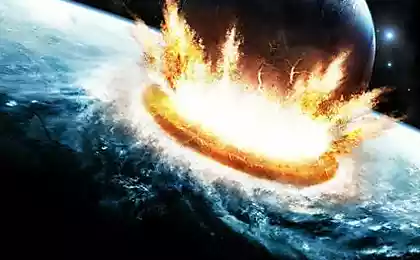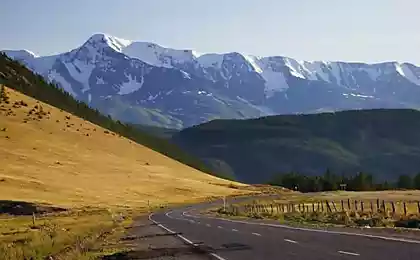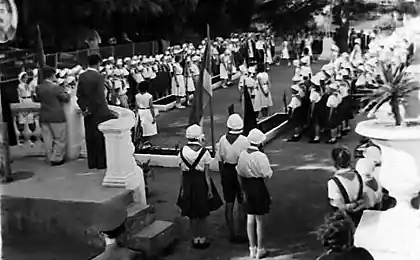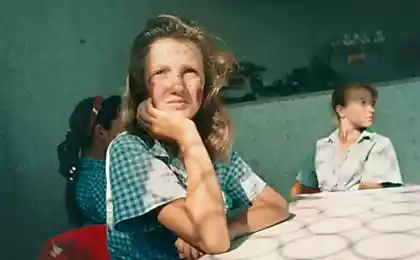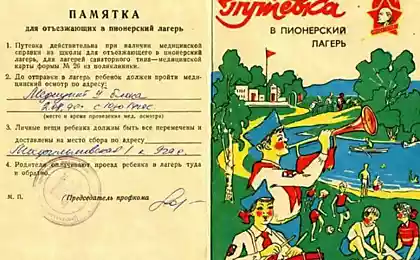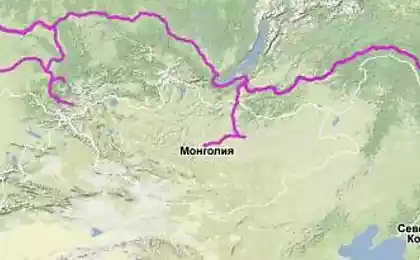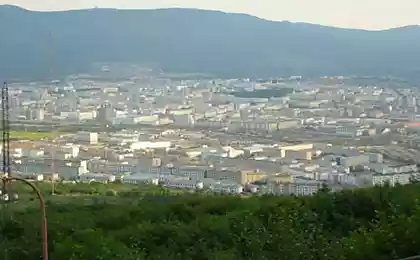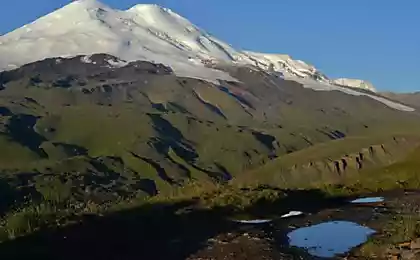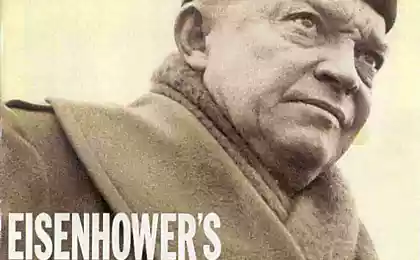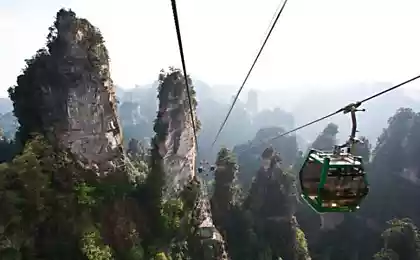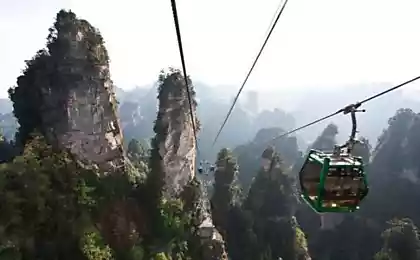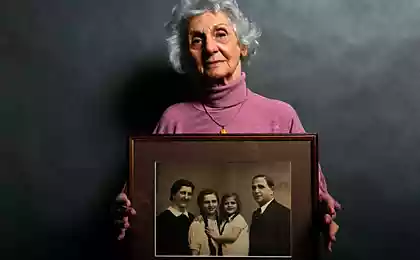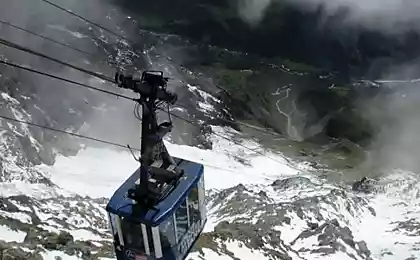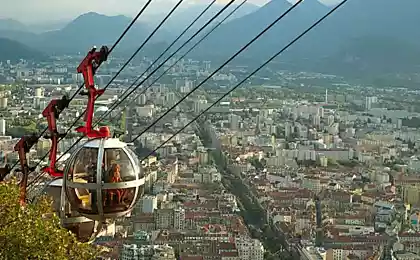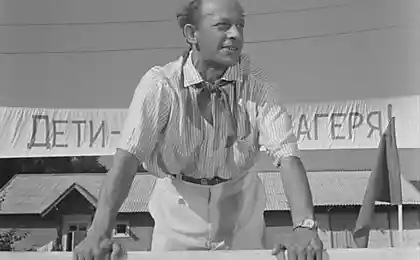1774
The road is one way ... GULAG camps in Kolyma.
Photo report is sooooo long, amounting 43ёh photos and text to them.
Be patient and do not break, I will try not to delay the photographs.
Took here
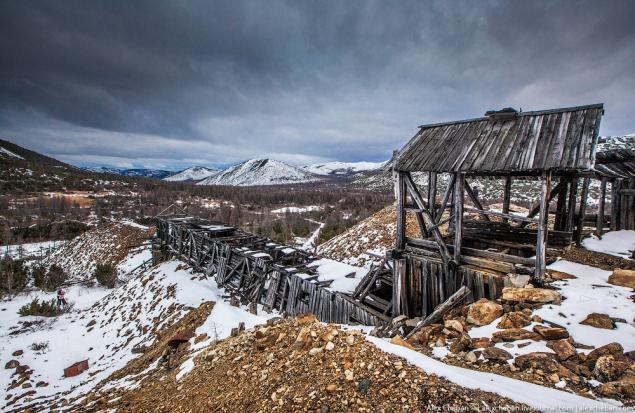
This "Dnipro" mine - one of Stalin's camps in Kolyma. July 11, 1929 adopted a resolution "On the use of labor-criminal prisoners" convicted for a term of 3 years, this decision was the starting point for creating a forced labor camps across the Soviet Union. During a trip to Magadan I visited one of the most accessible and well-preserved camp gulag "Dnipro" in the six-hour drive from Magadan. Very tezhelo place, especially listening to the stories about the life of prisoners and presenting their work in arduous conditions, climate here.
In 1928, on the Kolyma found rich deposits of gold. By 1931, the authorities decided to develop these deposits by prisoners. In the fall of 1931, the first group of prisoners, about 200 people were sent to the Kolyma. Probably wrong to assume that there were only political prisoners, there were also convicted under drgim articles of the Criminal Code. In this feature, I want to show the pictures of the camp and to supplement them with quotations from the memoirs of former prisoners who are here.
2.
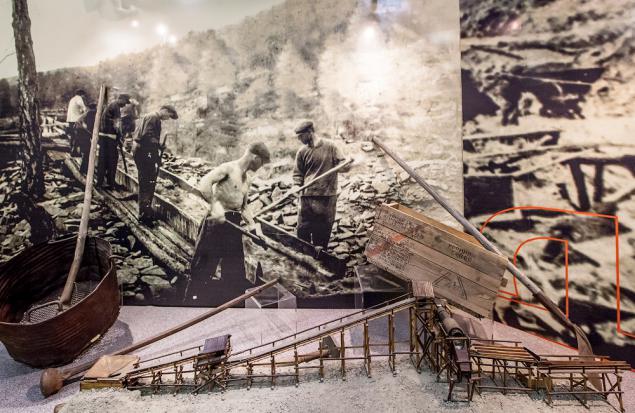
Its name "Dnipro" was named the key - one of the tributaries of irregular. Officially "Dnipro" called mines, although the percentage of its main products were given ore areas where tin was mined. A large area of the camp stretches at the foot of the hill is very high.
From Magadan to the Dnieper 6 hour drive, and on a beautiful road, the last 30-40 miles that looks like this:
3.
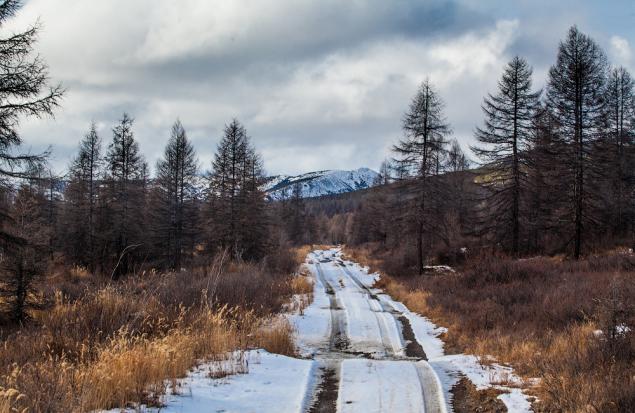
4.
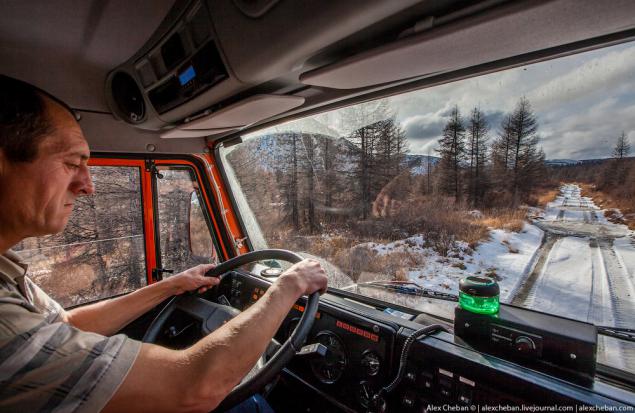
5.
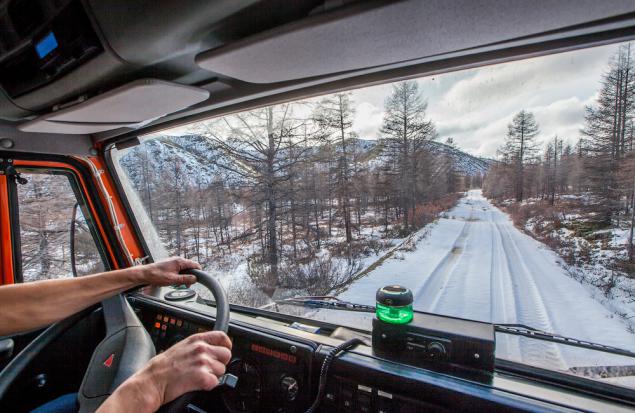
6.
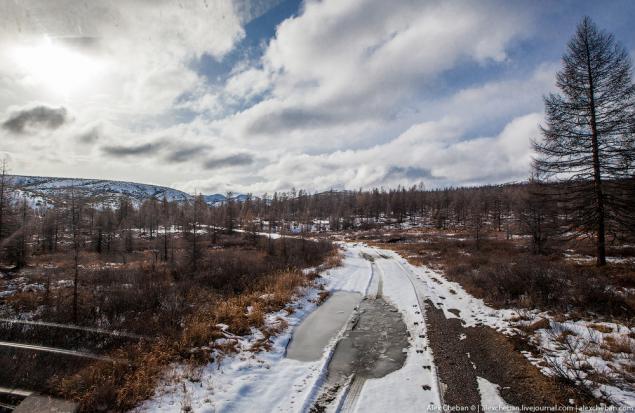
7.
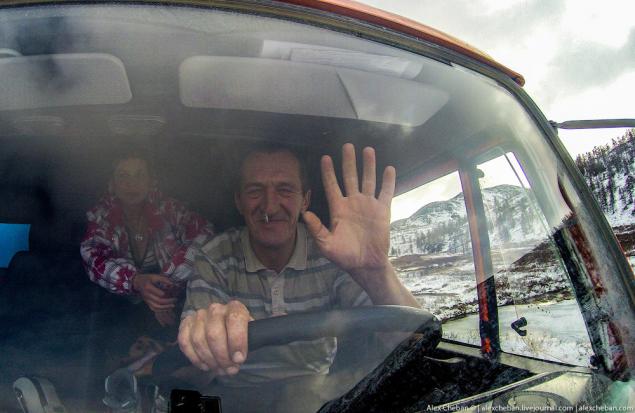
The first time I rode on KAMAZ-vahtovke remained in absolute delight. On this machine will be a separate article, it even has the function swap wheels from the cab, in general krutyak.
8.

9.
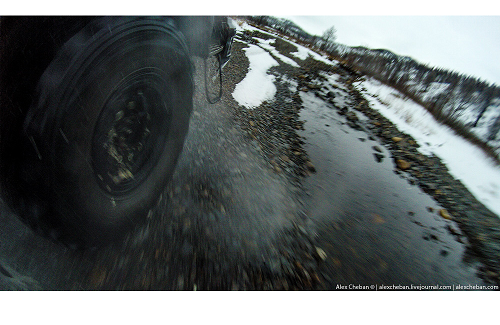
10.

But before the "KAMAZ" in the early 20th century here get something like this:
11.
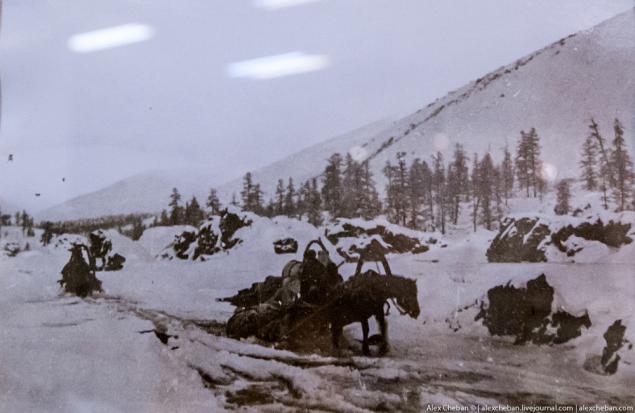
Mine and processing plant "Dnipro" was subordinated Shore Camp (Berlag, special camp number 5, number 5 Special Camps, Special Camps Dalstroi) mgmt. ITL Dalstroi and Gulag
Mine Dnieper was organized in the summer of 1941, he worked intermittently until 1955 and mined tin. The main labor force is the conclusion of Dnieper. Convicted on various articles of the Criminal Code of the RSFSR and the other republics of the Soviet Union.
Among them were also illegally repressed for so-called political articles, which by now rehabilitated or rehabilitated
All the years of "Dneprovskoe" basic tools here is to pick, shovel, crowbar and a wheelbarrow. However, some of the most severe industrial processes were mechanized, including the American equipment company "Denver", which comes from the United States during World War II Lend Lease. Later, it was dismantled and taken to other facilities, so that "Dnipro" is not preserved.
& Quot; "Studebaker" enters into a deep and narrow, very steep hills to bite the valley. At the foot of one of them, we see the old tunnel with superstructures, rails and a large mound - the blade. Below bulldozer had already begun to disfigure the land, turning all the greens, roots, boulders, and leaving a broad black band. Shortly before us arises from the small town of tents and several large wooden houses, but we do not go there, and turn right and go up to watch the camp.
Watch old, gates wide open, liquid barrage of barbed wire on wobbly rickety weathered pillars. Only the tower with a machine gun looks new - white pillars and the smell of pine needles. We disembarked and unceremoniously go to camp. & Quot; (P. Demant)
12.
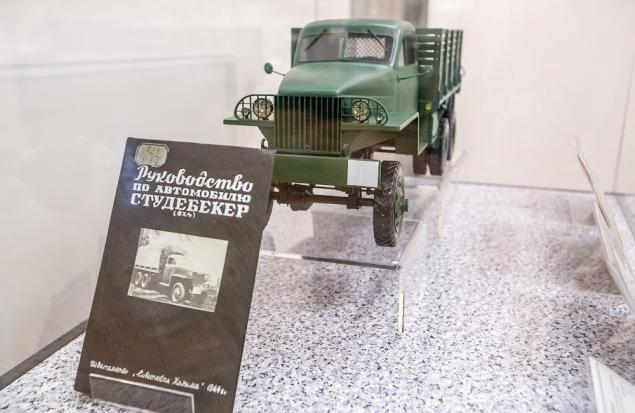
Note the hill - all its surface exploration striated furrows where prisoners rolled wheelbarrows with the breed. Norma - 80 wheelbarrows day. Up and down. In any weather - and hot summer and -50 in the winter.
13.
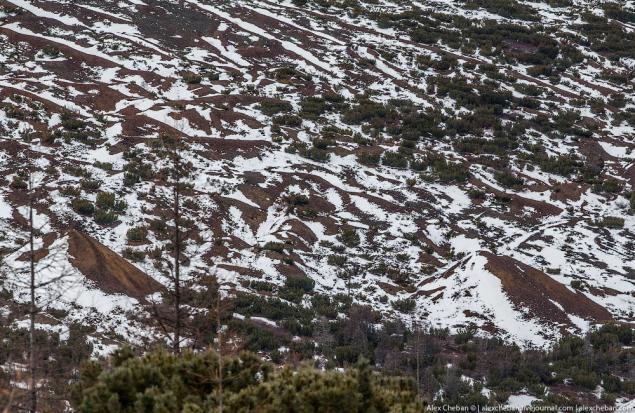
14.
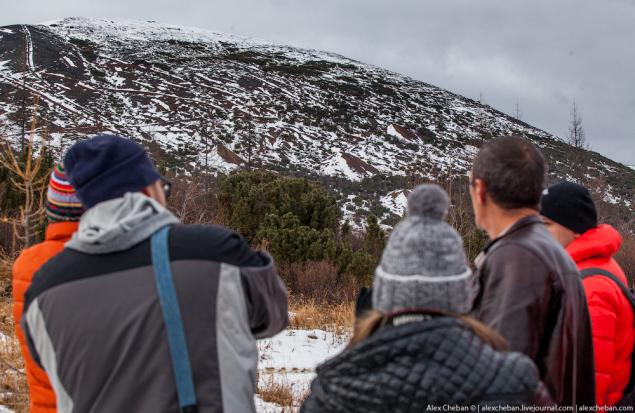
15.
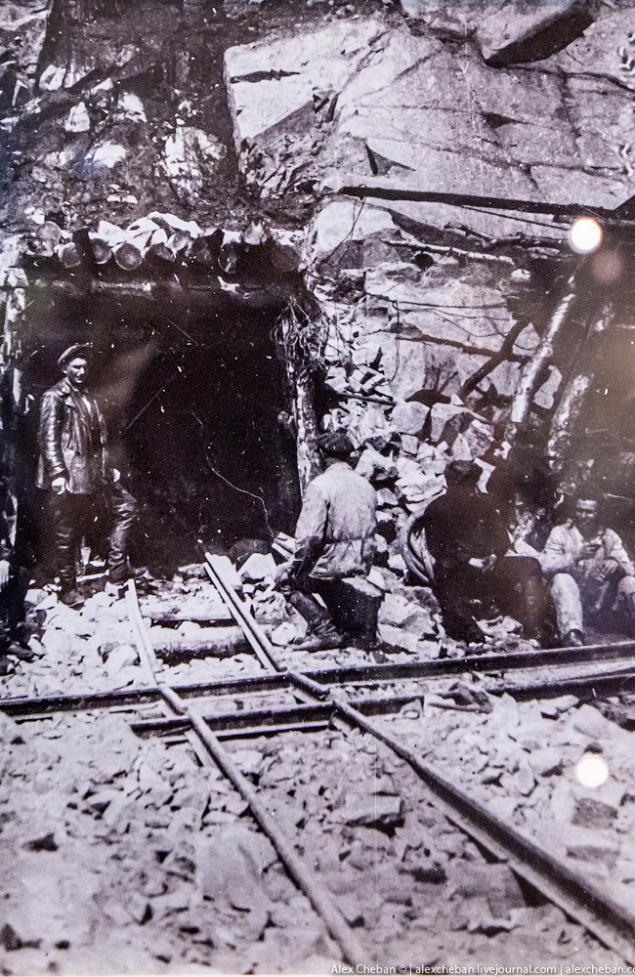
This steam generator, which is used to defrost the ground, because there permafrost and below ground level by several meters just been digging will not work. This is the 30th year, no mechanization did not yet exist, all the work is done manually.
16.
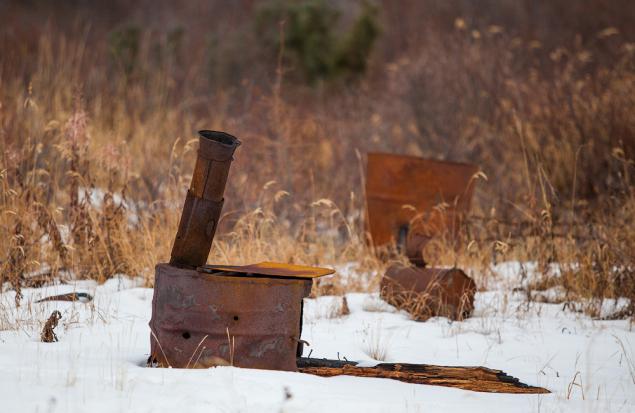
All items of furniture and household, all metal products produced locally hands of prisoners:
17.
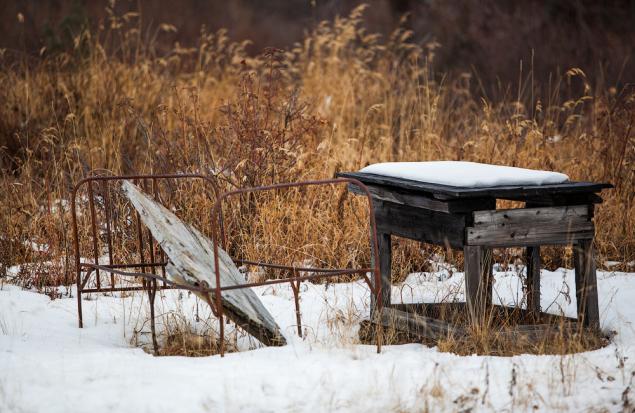
18.
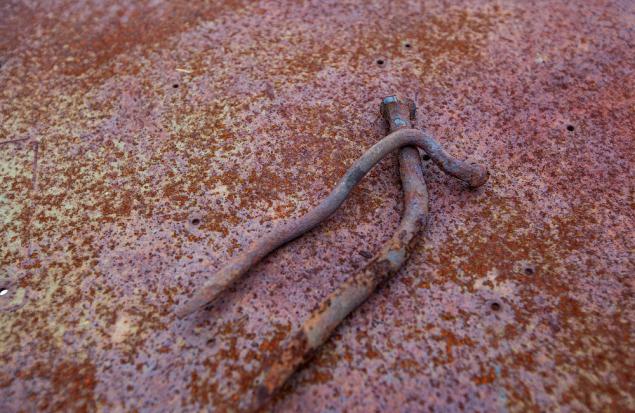
Carpenters did bunker flyover, trays, and our team installed motors, machinery, conveyors. In total, we have launched six such sluice boxes. As the start of each work on it were our mechanics - on the main motor for the pump. I was left to the last device minder. (V. Pepeliaev)
19.

Work in two shifts, 12 hours a week. Lunch brings to the job. Lunch - a 0, 5 liters of soup (water with black cabbage), 200 grams of oatmeal porridge, and 300 grams of bread. My work - including a drum, belt and sit seeing that everything revolves yes on the tape was a rock, and all. But, sometimes, something breaks - can tear tape, stuck in the stone bunker refuse pump or something. Then come on, come on! 10 days afternoon, ten - at night. Happy, of course, easier. On the night shift until you reach the zone until breakfast, and just fall asleep - is lunch, you lie - checking, and here, and dinner, and - on the job. (V. Pepeliaev)
20.
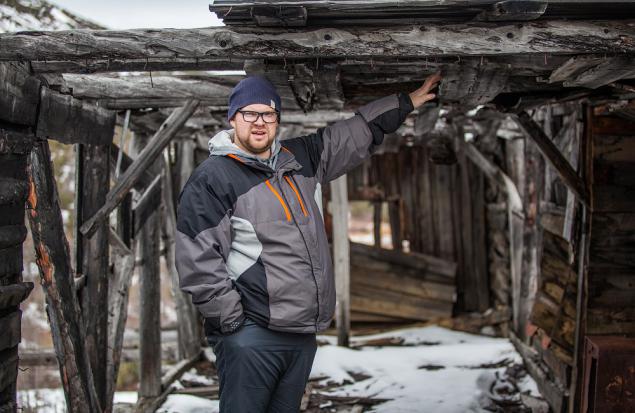
21.

22.
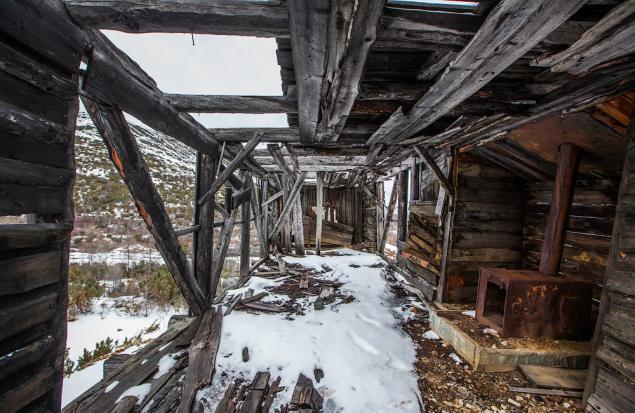
In the second period of the camp after the war there was electricity:
23.
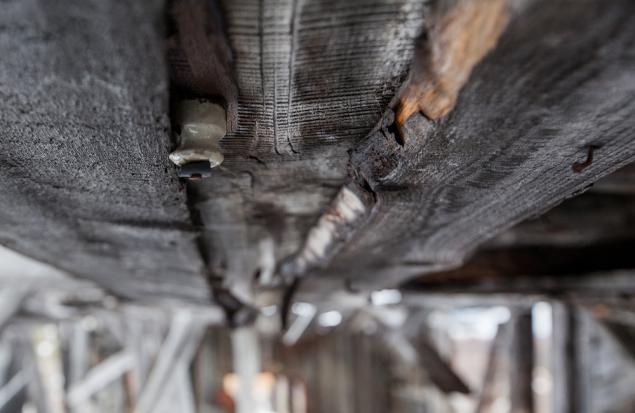
24.
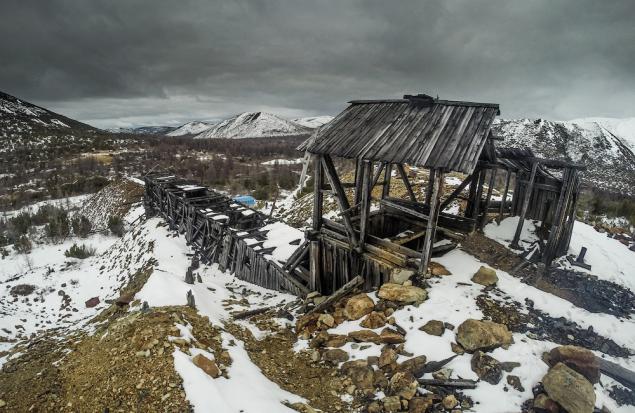
25.
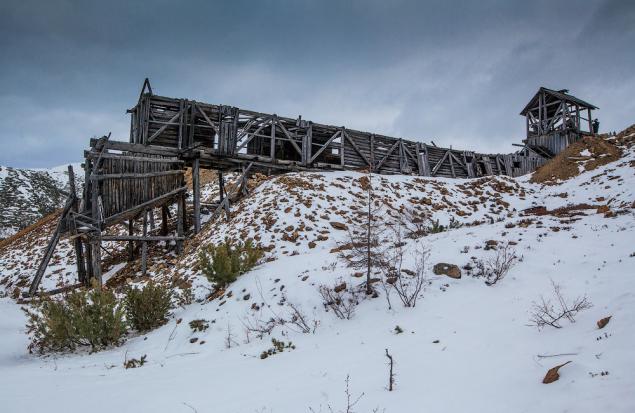
26.
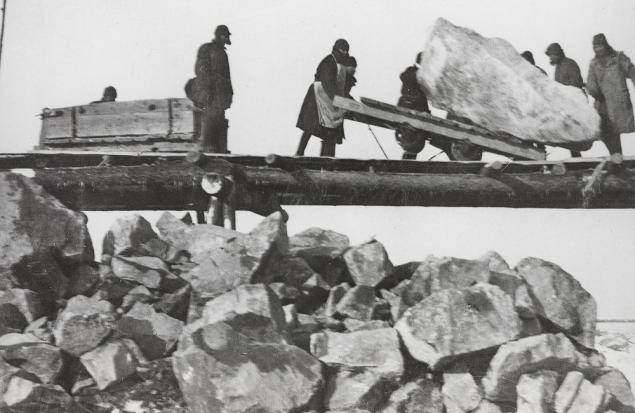
"The name of his" Dnipro "was named the key - one of the tributaries of irregular. Officially "Dnipro" called mines, although the major percentage of its production comes from the ore areas where tin is mined. A large area of the camp stretches at the foot of the hill is very high. Among the few old barracks are long green tents, just above the houses whiten new buildings. For the infirmary several prisoners in blue overalls impressive digging pits under the insulator. The dining room is located in the same rotten, gone into the land of the barracks. We lived in the second hut, located above the other, near the old tower. I arranged on the upper bunk through against the window. For the view from here over the mountains with rocky peaks, green valleys and river with waterfall would have to pay exorbitant prices anywhere in Switzerland. But here we get it for free fun, so we, at least, it seems. We still do not know that, contrary to the general rule of the camp, the reward for our work will scoop oatmeal gruel yes - all earned us will select the Coast camps "(P. Demant)
27.
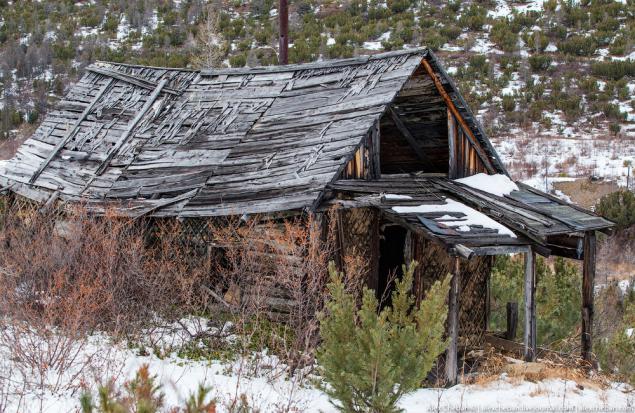
In the area of all the old barracks, slightly podremontirovat, but already there is a medical unit, Bur. Team of carpenters building a new large barracks, dining and new towers around the area. On the second day I was already brought to the job. We, the three persons, the foreman put on the pit. This pit, over her gates as wells. Two works on the collar, pull and unload the tub - a large bucket of thick iron (it weighs 60 pounds), third-down ship that blew up. Before lunch, I worked on the gate, and we completely cleared the bottom of the pit. Came to dinner, and there is already produced an explosion - it is necessary to pull out again. I volunteered to ship, and sat down on a bucket and slowly lowered my guys down by 6-8 meters. Loaded with stones tub, raised her children, and I suddenly felt sick, dizzy, weak, shovel falls from his hands. And I sat in the tub and somehow shouted: "Come on!" Fortunately, just realized that poisoned gases remaining after the explosion in the ground, under stones. After resting on the Kolyma clean air, said to himself: "Do not climb!" I started to think, how in the Far North, with sharply restricted diet and the complete absence of freedom to survive and remain human? Even in the most difficult for me hungry time (already more than a year of constant malnutrition) I was sure that survive, only need to become familiar with the situation, weigh the possibilities, consider the action. Remember the words of Confucius: "A man has three ways: reflection, imitation and experience. The first - the most noble, but difficult. The second - a light, and the third - the bitter ».
I imitate no one, the experience - not, then we must meditate, hoping at the same time just for themselves. Decided to immediately start looking for people who can get clever advice. In the evening, met a young Japanese man, a friend for Magadan shipment. He told me that he worked as a mechanic in the team mechanics (in mehtsehe) and that there are gaining fitters - a lot of work on the construction of sluice boxes. He promised to talk about me with the foreman. (V. Pepeliaev)
28.

The nights are almost there. Sun go down and only a few minutes already come out almost next, and mosquitoes and midges - something terrible. While drinking tea or soup in a bowl certainly flies in several pieces. Issued mosquito nets - a bag with mesh front, pull on the head. But they are of little help. (V. Pepeliaev)
29.
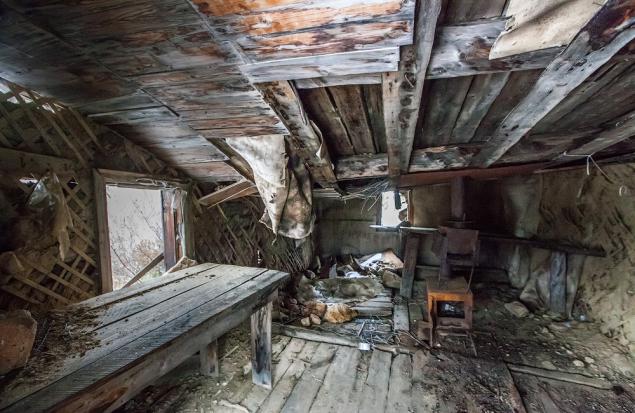
Just imagine - all these hills rocks in the center of the frame formed by the prisoners in the process. Almost everything was done by hand!
The entire hill was covered with offices opposite the extracted gangue. Gore if turned inside out, from the inside it was brown from acute rubble piles does not fit into the surrounding greenery pumila, which cover the slopes of the millennia and was destroyed in one fell swoop for the production of gray, heavy metals, without which no one wheel is spinning, - tin. Everywhere in the dumps, near the rail, stretched along the slope, at the compressor swarmed small figures in blue work clothes with numbers on the back, above the right knee and cap. Everyone who could, tried to get out of the cold tunnel, sun warmed today particularly well - it was the beginning of June, the brightest summer. (P. Demant)
30.
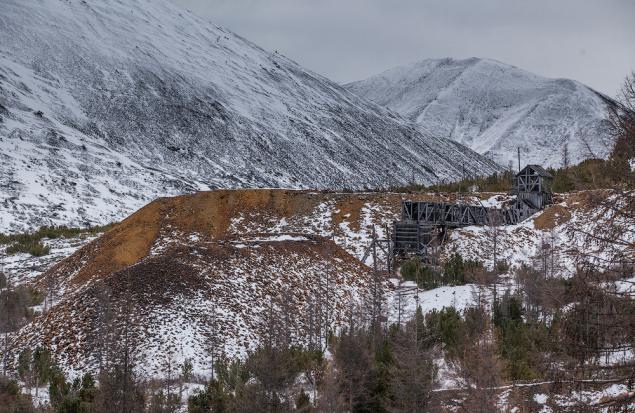
In the 50s the mechanization of labor was already at a high level. These are the remains of the railway on which the ore on trolleys fell down the hill. The design is called "apex»:
31.
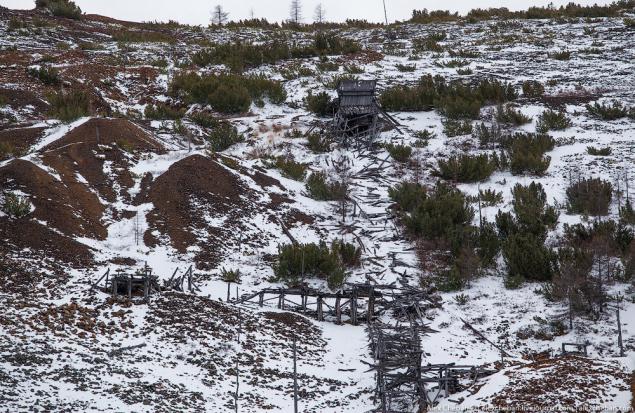
32.

33.
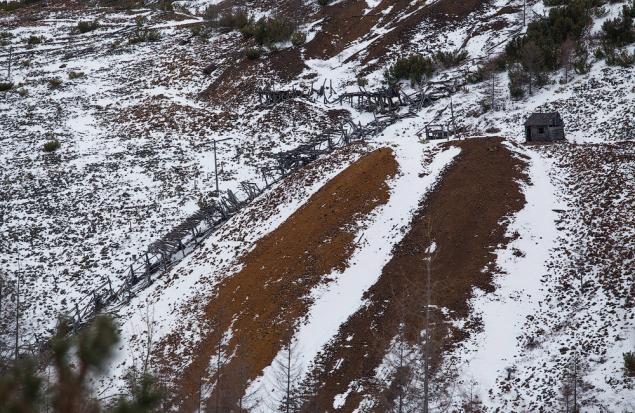
And this design - "elevator" for lowering and raising the ore, which was subsequently discharged onto dump trucks and transported to processing plants:
34.
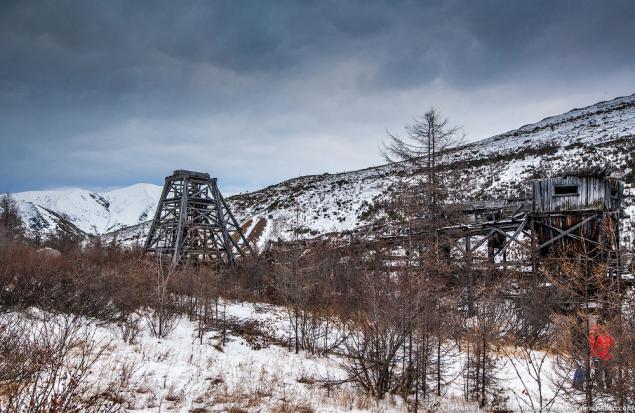
35.
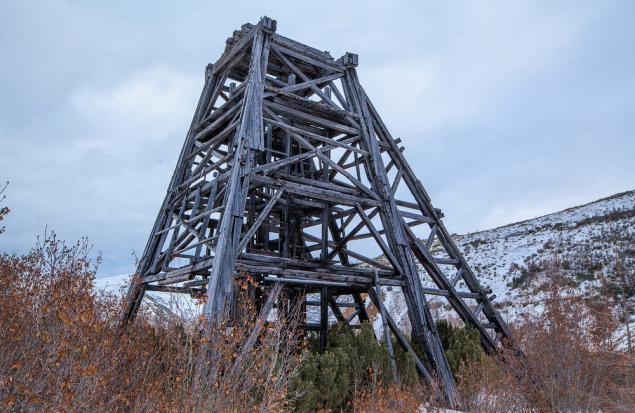
In the valley there are eight flushing devices. Mount them quickly, only the last, eighth, began to act just before the end of the season. At autopsy landfill bulldozer pushing "sand" in a deep bunker on the conveyor belt from there they went to a scrubber - large iron rotating barrel with lots of holes and thick pins inside for grinding the mixture coming from stones, mud, water and metal. Large stones were flying out to the dump - the growing pile of washed gravel, and fine particles with a stream of water that was pumped, got into a long sloping block, paving grate, under which lay the strips of cloth. Tin stone and sand settled on the cloth, and the earth and stones flying out the back of the pads. Then he settled concentrates were collected and washed again - cassiterite mining took place on the scheme of gold, but of course, the amount of tin came across disproportionately. (P. Demant)
36.

37.
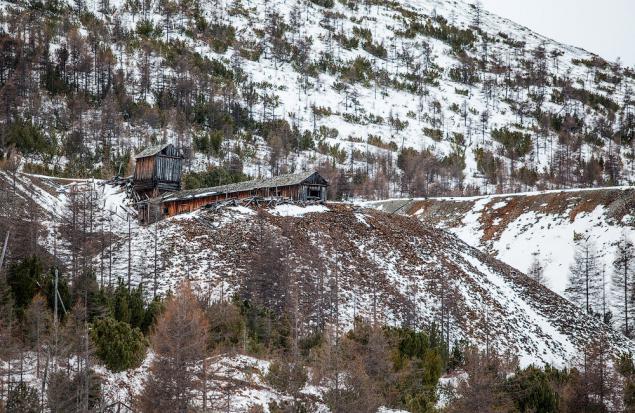
Guard towers were located on the tops of hills. Is there were personnel guard the camp in pyatidesyatigradusny frost and biting wind ?!
38.
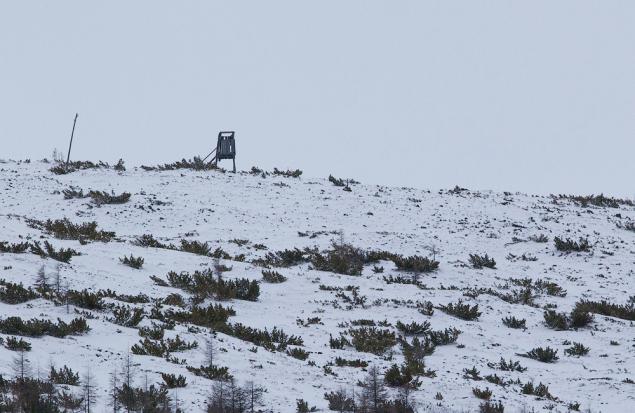
The cabin of the legendary "lorry»:
39.
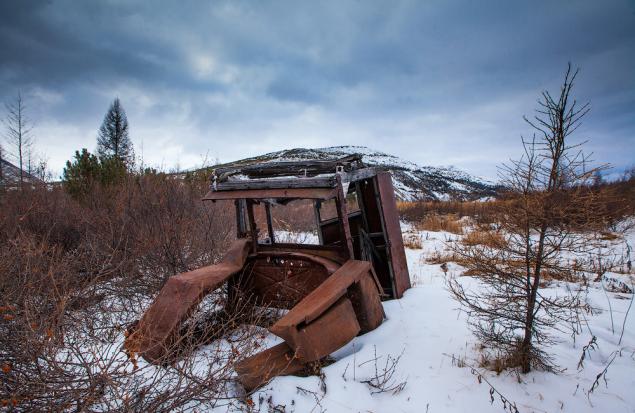
40.

41.
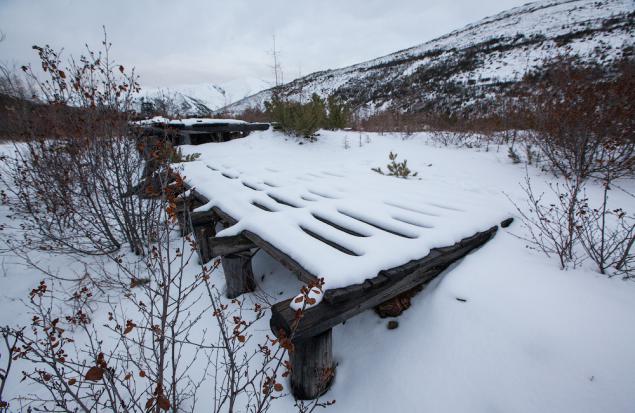
42.
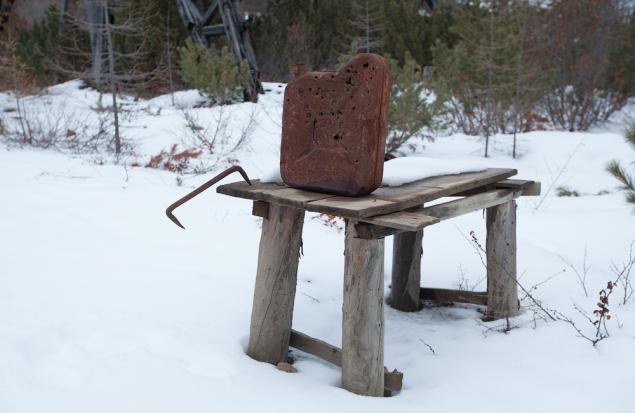
43.
Came in March 1953. Funeral-Union toot caught me at work. I walked out of the room, took off his hat, and prayed to God, thank you for getting rid of the Motherland from the tyrant. They say that someone is upset, crying. We did not have this, I have not seen. If, before the death of Stalin punished those who broke the room, it is now the opposite - who did not stay, those were not allowed into the camp from work.
Changes began. Removed from the lattice windows at night were not locked barracks: walk in the area where you want. In the dining room began to give bread without rules as sliced on the tables - so take it. There's also put a big barrel with red fish - Keta, kitchen beginning to bake donuts (for money), appeared to stall the butter and sugar.
Was a rumor that our camp will be canned, close. And, indeed, soon began production cuts, and then - on the short list - stages. A lot of our people, and myself included, were in Chelbanyu. It is quite close to the center of a large - Susuman. (V. Pepeliaev)
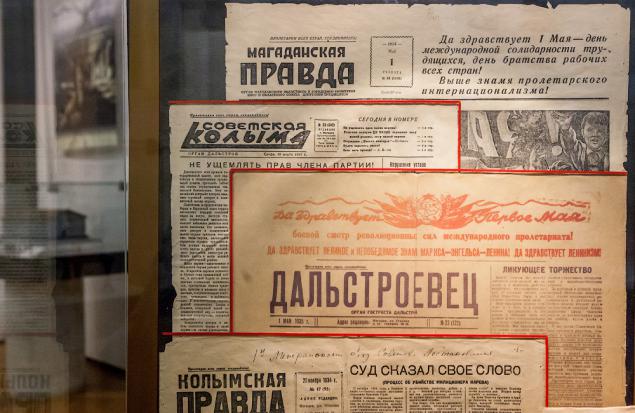
Be patient and do not break, I will try not to delay the photographs.
Took here

This "Dnipro" mine - one of Stalin's camps in Kolyma. July 11, 1929 adopted a resolution "On the use of labor-criminal prisoners" convicted for a term of 3 years, this decision was the starting point for creating a forced labor camps across the Soviet Union. During a trip to Magadan I visited one of the most accessible and well-preserved camp gulag "Dnipro" in the six-hour drive from Magadan. Very tezhelo place, especially listening to the stories about the life of prisoners and presenting their work in arduous conditions, climate here.
In 1928, on the Kolyma found rich deposits of gold. By 1931, the authorities decided to develop these deposits by prisoners. In the fall of 1931, the first group of prisoners, about 200 people were sent to the Kolyma. Probably wrong to assume that there were only political prisoners, there were also convicted under drgim articles of the Criminal Code. In this feature, I want to show the pictures of the camp and to supplement them with quotations from the memoirs of former prisoners who are here.
2.

Its name "Dnipro" was named the key - one of the tributaries of irregular. Officially "Dnipro" called mines, although the percentage of its main products were given ore areas where tin was mined. A large area of the camp stretches at the foot of the hill is very high.
From Magadan to the Dnieper 6 hour drive, and on a beautiful road, the last 30-40 miles that looks like this:
3.

4.

5.

6.

7.

The first time I rode on KAMAZ-vahtovke remained in absolute delight. On this machine will be a separate article, it even has the function swap wheels from the cab, in general krutyak.
8.

9.

10.

But before the "KAMAZ" in the early 20th century here get something like this:
11.

Mine and processing plant "Dnipro" was subordinated Shore Camp (Berlag, special camp number 5, number 5 Special Camps, Special Camps Dalstroi) mgmt. ITL Dalstroi and Gulag
Mine Dnieper was organized in the summer of 1941, he worked intermittently until 1955 and mined tin. The main labor force is the conclusion of Dnieper. Convicted on various articles of the Criminal Code of the RSFSR and the other republics of the Soviet Union.
Among them were also illegally repressed for so-called political articles, which by now rehabilitated or rehabilitated
All the years of "Dneprovskoe" basic tools here is to pick, shovel, crowbar and a wheelbarrow. However, some of the most severe industrial processes were mechanized, including the American equipment company "Denver", which comes from the United States during World War II Lend Lease. Later, it was dismantled and taken to other facilities, so that "Dnipro" is not preserved.
& Quot; "Studebaker" enters into a deep and narrow, very steep hills to bite the valley. At the foot of one of them, we see the old tunnel with superstructures, rails and a large mound - the blade. Below bulldozer had already begun to disfigure the land, turning all the greens, roots, boulders, and leaving a broad black band. Shortly before us arises from the small town of tents and several large wooden houses, but we do not go there, and turn right and go up to watch the camp.
Watch old, gates wide open, liquid barrage of barbed wire on wobbly rickety weathered pillars. Only the tower with a machine gun looks new - white pillars and the smell of pine needles. We disembarked and unceremoniously go to camp. & Quot; (P. Demant)
12.

Note the hill - all its surface exploration striated furrows where prisoners rolled wheelbarrows with the breed. Norma - 80 wheelbarrows day. Up and down. In any weather - and hot summer and -50 in the winter.
13.

14.

15.

This steam generator, which is used to defrost the ground, because there permafrost and below ground level by several meters just been digging will not work. This is the 30th year, no mechanization did not yet exist, all the work is done manually.
16.

All items of furniture and household, all metal products produced locally hands of prisoners:
17.

18.

Carpenters did bunker flyover, trays, and our team installed motors, machinery, conveyors. In total, we have launched six such sluice boxes. As the start of each work on it were our mechanics - on the main motor for the pump. I was left to the last device minder. (V. Pepeliaev)
19.

Work in two shifts, 12 hours a week. Lunch brings to the job. Lunch - a 0, 5 liters of soup (water with black cabbage), 200 grams of oatmeal porridge, and 300 grams of bread. My work - including a drum, belt and sit seeing that everything revolves yes on the tape was a rock, and all. But, sometimes, something breaks - can tear tape, stuck in the stone bunker refuse pump or something. Then come on, come on! 10 days afternoon, ten - at night. Happy, of course, easier. On the night shift until you reach the zone until breakfast, and just fall asleep - is lunch, you lie - checking, and here, and dinner, and - on the job. (V. Pepeliaev)
20.

21.

22.

In the second period of the camp after the war there was electricity:
23.

24.

25.

26.

"The name of his" Dnipro "was named the key - one of the tributaries of irregular. Officially "Dnipro" called mines, although the major percentage of its production comes from the ore areas where tin is mined. A large area of the camp stretches at the foot of the hill is very high. Among the few old barracks are long green tents, just above the houses whiten new buildings. For the infirmary several prisoners in blue overalls impressive digging pits under the insulator. The dining room is located in the same rotten, gone into the land of the barracks. We lived in the second hut, located above the other, near the old tower. I arranged on the upper bunk through against the window. For the view from here over the mountains with rocky peaks, green valleys and river with waterfall would have to pay exorbitant prices anywhere in Switzerland. But here we get it for free fun, so we, at least, it seems. We still do not know that, contrary to the general rule of the camp, the reward for our work will scoop oatmeal gruel yes - all earned us will select the Coast camps "(P. Demant)
27.

In the area of all the old barracks, slightly podremontirovat, but already there is a medical unit, Bur. Team of carpenters building a new large barracks, dining and new towers around the area. On the second day I was already brought to the job. We, the three persons, the foreman put on the pit. This pit, over her gates as wells. Two works on the collar, pull and unload the tub - a large bucket of thick iron (it weighs 60 pounds), third-down ship that blew up. Before lunch, I worked on the gate, and we completely cleared the bottom of the pit. Came to dinner, and there is already produced an explosion - it is necessary to pull out again. I volunteered to ship, and sat down on a bucket and slowly lowered my guys down by 6-8 meters. Loaded with stones tub, raised her children, and I suddenly felt sick, dizzy, weak, shovel falls from his hands. And I sat in the tub and somehow shouted: "Come on!" Fortunately, just realized that poisoned gases remaining after the explosion in the ground, under stones. After resting on the Kolyma clean air, said to himself: "Do not climb!" I started to think, how in the Far North, with sharply restricted diet and the complete absence of freedom to survive and remain human? Even in the most difficult for me hungry time (already more than a year of constant malnutrition) I was sure that survive, only need to become familiar with the situation, weigh the possibilities, consider the action. Remember the words of Confucius: "A man has three ways: reflection, imitation and experience. The first - the most noble, but difficult. The second - a light, and the third - the bitter ».
I imitate no one, the experience - not, then we must meditate, hoping at the same time just for themselves. Decided to immediately start looking for people who can get clever advice. In the evening, met a young Japanese man, a friend for Magadan shipment. He told me that he worked as a mechanic in the team mechanics (in mehtsehe) and that there are gaining fitters - a lot of work on the construction of sluice boxes. He promised to talk about me with the foreman. (V. Pepeliaev)
28.

The nights are almost there. Sun go down and only a few minutes already come out almost next, and mosquitoes and midges - something terrible. While drinking tea or soup in a bowl certainly flies in several pieces. Issued mosquito nets - a bag with mesh front, pull on the head. But they are of little help. (V. Pepeliaev)
29.

Just imagine - all these hills rocks in the center of the frame formed by the prisoners in the process. Almost everything was done by hand!
The entire hill was covered with offices opposite the extracted gangue. Gore if turned inside out, from the inside it was brown from acute rubble piles does not fit into the surrounding greenery pumila, which cover the slopes of the millennia and was destroyed in one fell swoop for the production of gray, heavy metals, without which no one wheel is spinning, - tin. Everywhere in the dumps, near the rail, stretched along the slope, at the compressor swarmed small figures in blue work clothes with numbers on the back, above the right knee and cap. Everyone who could, tried to get out of the cold tunnel, sun warmed today particularly well - it was the beginning of June, the brightest summer. (P. Demant)
30.

In the 50s the mechanization of labor was already at a high level. These are the remains of the railway on which the ore on trolleys fell down the hill. The design is called "apex»:
31.

32.

33.

And this design - "elevator" for lowering and raising the ore, which was subsequently discharged onto dump trucks and transported to processing plants:
34.

35.

In the valley there are eight flushing devices. Mount them quickly, only the last, eighth, began to act just before the end of the season. At autopsy landfill bulldozer pushing "sand" in a deep bunker on the conveyor belt from there they went to a scrubber - large iron rotating barrel with lots of holes and thick pins inside for grinding the mixture coming from stones, mud, water and metal. Large stones were flying out to the dump - the growing pile of washed gravel, and fine particles with a stream of water that was pumped, got into a long sloping block, paving grate, under which lay the strips of cloth. Tin stone and sand settled on the cloth, and the earth and stones flying out the back of the pads. Then he settled concentrates were collected and washed again - cassiterite mining took place on the scheme of gold, but of course, the amount of tin came across disproportionately. (P. Demant)
36.

37.

Guard towers were located on the tops of hills. Is there were personnel guard the camp in pyatidesyatigradusny frost and biting wind ?!
38.

The cabin of the legendary "lorry»:
39.

40.

41.

42.

43.
Came in March 1953. Funeral-Union toot caught me at work. I walked out of the room, took off his hat, and prayed to God, thank you for getting rid of the Motherland from the tyrant. They say that someone is upset, crying. We did not have this, I have not seen. If, before the death of Stalin punished those who broke the room, it is now the opposite - who did not stay, those were not allowed into the camp from work.
Changes began. Removed from the lattice windows at night were not locked barracks: walk in the area where you want. In the dining room began to give bread without rules as sliced on the tables - so take it. There's also put a big barrel with red fish - Keta, kitchen beginning to bake donuts (for money), appeared to stall the butter and sugar.
Was a rumor that our camp will be canned, close. And, indeed, soon began production cuts, and then - on the short list - stages. A lot of our people, and myself included, were in Chelbanyu. It is quite close to the center of a large - Susuman. (V. Pepeliaev)

